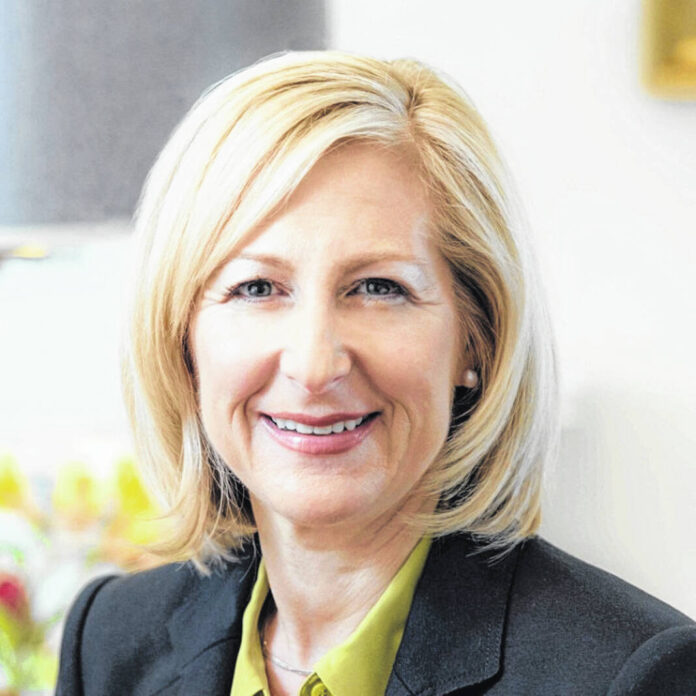When a recent news story asked a former Ohio gubernatorial campaign manager about candidate debates this cycle, he said, “Campaigns respond to the electorate. They’re built to win. And if (doing debates) was a big deal, they would just do them.”
Well, they are a big deal. According to a new USA TODAY Network/Suffolk University poll, voters overwhelmingly say the candidates for governor and U.S. Senate should debate. In fact, 84 percent of them say the candidates should debate.
We agree with the majority of Ohioans, and the Ohio Debate Commission remains ready to sit down with both sides of each race and help them respond to the electorate.
How did these candidates get to the middle of September without sitting down to talk with each other about debates?
First, the Ohio situation is not unique. Pennsylvania. Georgia. Nebraska. Washington. Debate organizers across the country face the same headwinds with both Democratic and Republican candidates.
Maybe candidates and campaigns are out of practice and are taking advantage of the break the pandemic gave in-person demands. Nevertheless, this survey shows that the public believes the leaders who want to serve them should get in shape and show up for in-person experiences.
Some campaigns say other ways for voters to get information meet the need to see candidates together. They often point to joint appearances at editorial interviews where editorial boards have their own agenda as they consider who to endorse. These are worthwhile endeavors, but they’re not televised debates.
Other critiques say debates don’t offer new information about candidates, are only about entertainment and don’t change people’s minds. Yet it is the challenge of answering questions without the protection of completely controlling the message that leads to new information and, according to Dr. John C. Green, director emeritus of the Ray C. Bliss Institute of Applied Politics, “particularly in races where there is not a strong incumbent, … (debates) can matter
2 percent or 3 percentage points.”
Also, research on debates in other countries has found that they even can reduce political polarization because they introduce people to and help them understand opposing positions.
Now, eight out of 10 Ohioans have said they too know the reality, separate from the campaigns’ rationales: in Ohio, we expect our gubernatorial and U.S. Senate candidates to debate.
Incumbent gubernatorial candidate Mike DeWine actually helped set this expectation. He debated all three times when he ran for the U.S. Senate, including when he had a big lead in 1994 over Joel Hyatt, going on to win 53-39%, and in 2000, when he debated Ted Celeste and won 60-36%.
And with the governor’s office, only once in Ohio’s last 10 gubernatorial races has there not been a general election debate, even when the candidates were not close. George Voinovich did debates in both of his races in 1990 and 1994 — in 1994 he had a huge lead over Robert Burch and won by 47 points, the biggest landslide in Ohio history.
Gubernatorial debates also were held in 2002, the year Bob Taft was re-elected by nearly 20 points over Democrat Tim Hagan, and in 2006, when Democrat Ted Strickland beat Republican Ken Blackwell by nearly 24 percentage points. In 2018, then-Attorney General DeWine participated in his first Ohio Debate Commission debate against Richard Cordray.
Those candidates and campaigns didn’t wait for a poll to tell them the right thing to do and the best way for one candidate to show how they contrast with another. They did what candidates do in strong democracies: show up, stand up and speak out on a debate stage together.
This tradition may be at risk, but it is more important than ever: With an open senate seat that has drawn international attention because of its role in the balance of power in our nation’s capital, Ohio’s first-ever female nominee for governor and tens of thousands of new registrants in Ohio, people want to see and hear for themselves.
The Ohio Debate Commission has hosted each of the candidates before, and we reflect the entire state, with more than two dozen news outlets already saying they’ll air or cover our programs for these races. We bring together millions of Ohioans by providing live, livestreamed and recorded versions of our work, at no cost to any outlet that wants the content, not to mention debate watches and programming for high school and college students in conjunction with our debates.
Which candidates would knowingly ignore more than eight out of 10 constituents and take on the risk of being dismissed? No one will need to speculate if the campaigns for Ohio governor and U.S. Senate respond to the electorate and participate in debates. Readers who believe there should be debates can write, email or use social media to let the same candidates know they agree with 84% of likely Ohio voters, and urge them to debate.
We’ll stay in touch with the campaigns too, and they know how to reach us.
As of Sept. 15, gubernatorial candidate Nan Whaley (Democrat) has accepted the ODC’s invitation – in addition to others — to debate incumbent Ohio Gov. DeWine (Republican), who has not yet accepted any invitations to debate. Senate candidates Tim Ryan (Democrat) and J.D. Vance (Republican) have not accepted any of the same debate invitations, although Ryan has accepted the ODC invitation.
Jill Zimon is executive director of the Ohio Debate Commission, a nonpartisan, not-for-profit collaboration of civic, academic and media organizations that conducts debates for the highest statewide offices. Her column does not necessarily reflect the opinion of The Lima News editorial board or AIM Media, owner of The Lima News.







